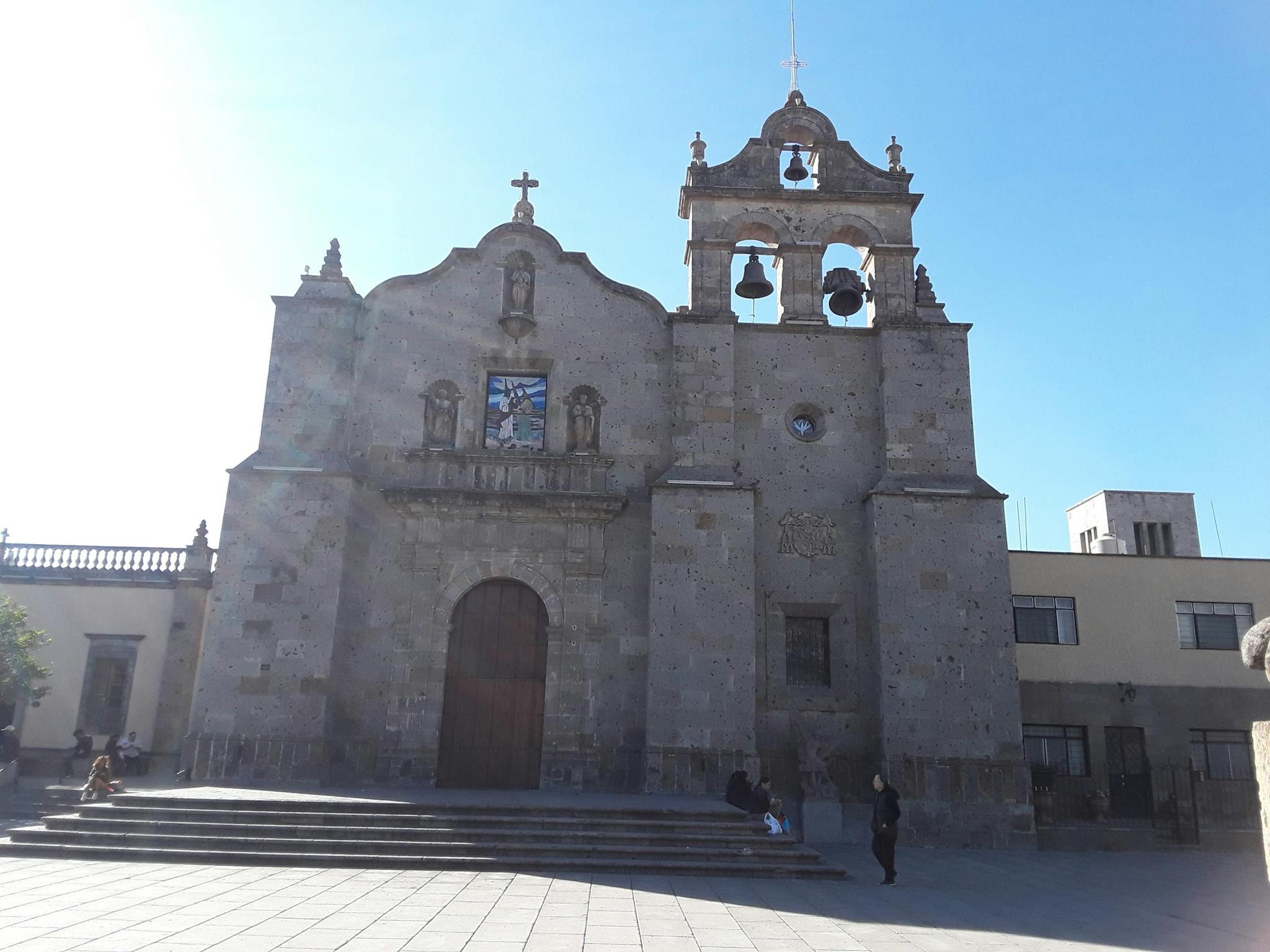
Wonderguide by
anwar tapia
Guadalajara ancient churches
Guide to all the churches built in the 16th century

Use QR code to view online version

ancient churches of guadalajara
churches built in the 16th century

Limited offer
Gift from anwar. Get a discount off all experiences!
Sign up now and get a discount off any experience of your choice.
My Recommendations
Place
anwar:The Basilica de la Asunción de María Santísima, also known as the Guadalajara Cathedral is a fascinating site. Its architecture contemplates diverse styles such as neoclassical, baroque, and gothic, which can be seen in its towers.It was commissioned in 1561 by King Felipe II and the cathedral was completed in 1618.In 1818, an earthquake shook the city, causing the towers and the dome to collapse. These were replaced, but the new structures were destroyed by a subsequent earthquake in 1849.The new structures were completed in 1854. Pope Pius XII elevated the cathedral to the rank of Minor Basilica. It contains altars dedicated to Our Lady of the Assumption, Our Lady of Guadalupe, Our Lady of Sorrows, Our Lady of Zapopan (patron saint of Guadalajara), Saint Dominic, St. Nicholas, St. Thomas Aquinas, St. Christopher and St. John of God. The altar is made of marble and silver. The stained glass was imported from France.
The cathedral houses the mummified body of Santa Innocencia (a young girl from the 1700s who, according to legend, was killed by her father for converting to Catholicism),[2] well as the remains of three cardinals and several other former bishops of the diocese, and Fr. Juan Jesús Posadas Ocampo, who was assassinated in 1993 at the Guadalajara International Airport.[1]
more
Place
anwar:Before the cathedral of Guadalajara was built the arish of San Jose de Analco as built in1543 and was considered the most portant temple of its time.part from the extensions and reconstructions that are normal in the life of the churches, this temple in particular has suffered -unfortunately- from interventions that have disfigured the temple in style despite its importance. The last one at the end of the 19th century when its interior was almost completely remodeled. In San José Analco it is possible to see on its walls, the different stages of construction distinguishing the different sizes, styles and colors of its stones and ornaments. The current structure of the church corresponds, for the most part, to the 17th century. We presume, however, that the atrium and general layout of the temple that we see today, despite its various reconstructions and extensions, are remnants of the original from the 16th century. The outstanding part is of course its cover, which some call plateres
more
Place
anwar:Like all hermitage of that time, its construction was made of adobe with a grass roof, and its construction, carried out by indigenous cocas and tecuexes, was directed by the Franciscan friars. Over time, the temple began to expand, and we know that most of the structure you see today dates from the end of the 17th century when the town of San José de Analco was named a neighborhood of Guadalajara
The central temple dedicated to Saint Sebastian is flanked by two chapels; the first dedicated to Our Lady of Guadalupe and the second called Chapel of El Calvario. The most precise architectural description follows in this magnificent description by José Alfredo Alcántar:
«The architectural plan of San Sebastián is of the basilical type with three naves, with five sections, divided by cylindrical pillars that support arches in a north-south direction, the supports are of the trithostyle type with dead grooves, supported on almost square pedestals. The central nave is higher and allows the presence of skylights with elliptical profiles in a horizontal arrangement, adjusted to the axis of the arches. It has a soto choir, an element that causes spatial staggering and serves as the old narthex for catechumens. The roofs of the three naves are horizontal and groin vaulted in the presbytery, the flat ones referred to, replace the old traditional system based on wooden beams with a roof. Now it exhibits vaults made of wedge bricks on iron beams. The presbytery has a square base, with lateral ventilation based on rectangular windows on the cornices; Using a triumphal arch, the roof is the most elaborate of the architectural complex and is made up of ribbed tiercerons, whose formal result in the intrados is defined by a flower. The dressing room is located on its west side and the west side is occupied by the sacristy.»
more
Place
anwar:Temple of st. Francis of Assisi built-in 1580is located in the heart of Centro Guadalajara and known by locals as Los templos.This temple was part of the Franciscan monastery that was established practically simultaneously with the founding of the city. We know that the construction of the temple began in 1580, although it is also true that a large part of the temple that we see today dates from the end of the 17th century, when it was decided to expand it around 1668. However, this expansion was carried out on a large part of the original foundations of the temple from the 16th century.
The bell tower is a copy of the cathedral originals. Its three-part Baroque-style façade stands out, a product of the 17th-century extension, and especially its Solomonic columns that frame the door and which are also a copy of those of the Cathedral. Fashions change and churches are no exception to the rule; In 1825 the large Churrigueresque interiors were replaced by neoclassical altars, fashionable at the time. A fire, caused by what is said, forced the total reconstruction of its interior in 1936.
In 1860, as a consequence of Juárez and the Reform Laws, the exclaustration came. In 1861 the chapels of San Antonio de Padua and San Roque and the stone fence that surrounded the convent were demolished. Part of the convent was sold. On the grounds of the orchard was the Central Mexican Railroad Station, exactly behind the temple, which opened in 1888. In the center of the San Francisco garden was the monument to General Ramón Corona, today located on Calzada Independencia.
more
Place
anwar:Another temple that was originally part of a convent, of the Augustinian order. In 1574 this order began to build a temporary temple on the site. Contrary to the custom of locating the temples with an east-west orientation, the temple of San Agustín is located with a North-South orientation. This is surely due to the fact that it faced the Plaza Mayor in this way, let us remember that at that time the Cathedral was located where the temple of Santa María de Gracia is today, and it was not until 1618 when the current Cathedral was put into operation. In 1592, the space that we now know as the Plaza de Armas was designated as the Plaza Mayor, somehow losing the importance of the one located in front of the temple, which became a market.**
On July 21, 1587 Fray Juan de San Sebastián, Prior of the Convent, bought in his name some houses located on the street called San Agustín, behind the Plaza de la Real Audiencia, and work began on the temple and convent. Guadalajara, under the patronage of San José de Gracia. It was not until 1674 that Fray José Rodríguez, in charge of the work, asked the Court and the City Council to grant him more land for a cemetery and it was finally in that year that the construction of the church was completed.***
The temple is sober, in the baroque style but it is not loaded with ornaments like other examples of the time, although it does not stop being elegant for that. Ruiz Razura describes it like this:
The temple fits within the sober baroque; it has a single nave, without a transept, therefore the dome with groin vaults was not present. Its façade is made up of two bodies; the first adorned with a semicircular arch with paired columns with fluted shafts at the entrance. The entablature is decorated with triglyphs and blind metopes. The second body boasts a rectangular coral window with an interrupted pediment and a pilaster on each side crowned with pinnacles of Gothic trend. On the upper cornice there are small pilasters that look like triglyphs.
more
Place
anwar:I am adding this parish to the list as some historians consider it as the first temple built by europeans in Guadalajara.In 1531 the Franciscans arrived in this area called Huentitlan.It was a religious place for the indigenous it was a place where they would give offerings to their gods.The Franciscans built this parish right on the site so as to convert the indigenous to christianity.Huentitán, which in Tarahumara means “place where offerings are made”, has existed as a community since before the arrival of the Spaniards in Nueva Galicia, and three gods were venerated there: Teopiltzintli, the child god who protected the fair weather; Nayarit, god of war and Heri, god of wisdom.
The first evangelizers who arrived in Huentitán were the Franciscans, who built a small hermitage of adobe and straw. Apparently around 1734 the temple was erected, and in 1759 it was awarded to the Parish of San José de Analco.The oral tradition continues narrating that in this place there was a small hospital, between the 16th and 17th centuries.
The church is preceded by 5 quarry steps, its facade points to the east, the atrium was in other times a cemetery, in one of the four vaults it reads the year 1734. In the 19th century the floor was made of wood, later it was mosaic and currently it is parquet, same as it belonged to the Basilica of Our Lady of Zapopan. The original parish that the Franciscans built no longer stands but there legacy is still alive in this beautiful parish and the equally beautiful garden!! worth checking it out!!
more
Place
anwar:Believe it or not, the Guadalajara cathedral that now stands was not the first cathedral in Guadalajara.Where the Templo de Santa Maria de Gracia now stands there was constructed the first cathedral of Guadalajara called church of San Miguel.The old cathedral was a fairly simple adobe temple . There was a fire on May 30, 1574 that severely damaged the church. Some time later, the center of Guadalajara moved to the new Plaza de Armas , where the new cathedral was built .The Order of Preachers had moved to the site of the old cathedral in 1590. Before the first nunnery was established in Guadalajara, daughters of the elite who wanted to be nuns had to move to Mexico City , Puebla de los Angeles, or Antequera . There were no monasteries in Guadalajara until that time. Since the old cathedral was destroyed, the Dominicans wanted to rebuild the church and build a large convent. On April 7, 1661, the first stone of the new convent was laid. The nuns in the convent were more privileged than
more
Wonderguide map
- Guadalajara Cathedral
- Parish of San José de Analco
- Templo de San Sebastián de Analco
- Los Dos Templos
- Templo de San Agustín
- Parroquia del Señor de la Ascención
- Templo de Santa Maria de Gracia
Sharing is caring!

